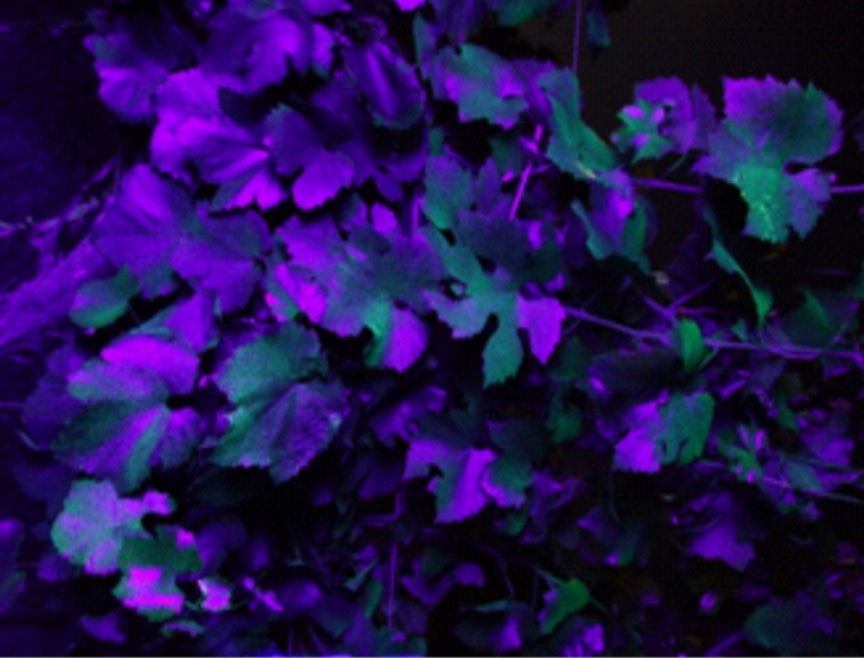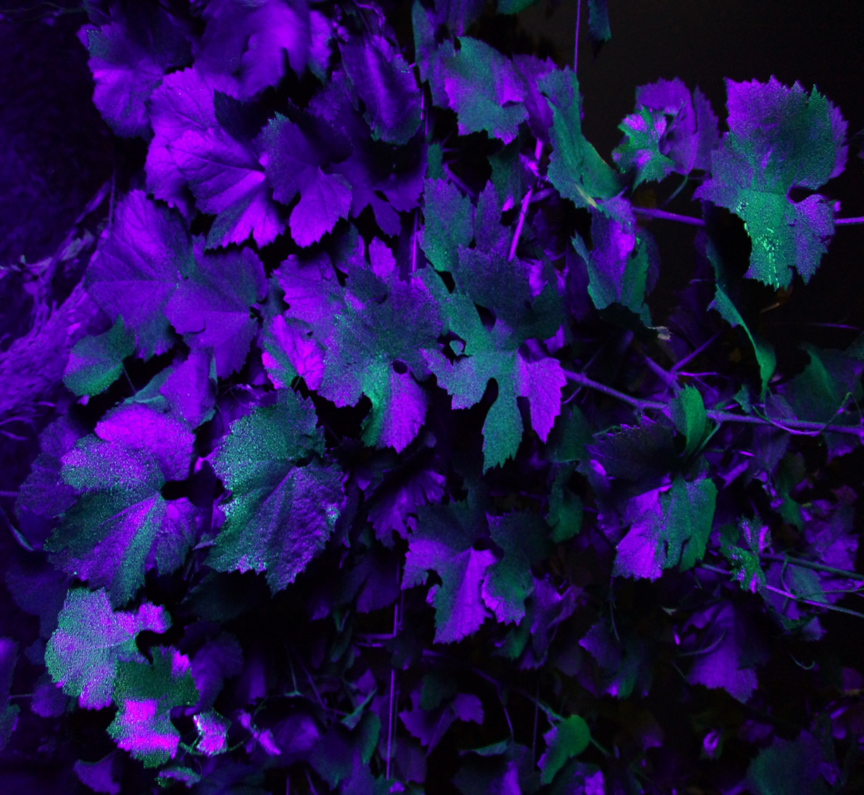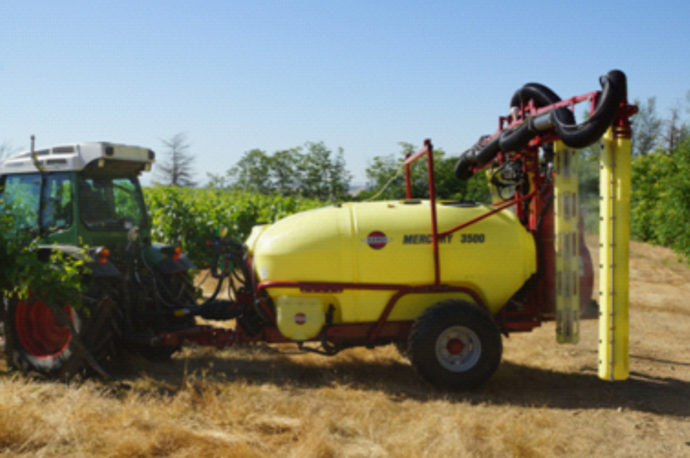How good is the quality of a spraying task in the field? Sometimes we do not give enough attention to the proper size of the droplets generated when spraying a certainpesticide, or their statistical population, but the effectiveness or the whole treatment is strongly affected by them. A proper combination of traditional technical knowledge, new sensors and a touch of magic can help farmers doing things right.
A few years ago, one of the Spanish partners in the Sparkle project, the Polytechnic University of Madrid, performed a field test of a vineyard sprayer, Hardi Mercury 3500, equipped with the awarded control system IRIS-2. This machine is a hydro-pneumatic sprayer for vine canopies, with a large central fan, a high pressure electronic controller for the liquid, and four vertical diffusing arms to carry both the air and the droplets towards both faces of two adjacent vine rows.
One important question for the technician controlling this type of machines in the field is “will the pesticide arrive in proper quantity to the surface of the leaves which I am trying to protect?”. As mentioned, the number and size of droplets will affect strongly the final quality of the treatment.
Farmers usually rely on hydrosensitive paper (yellow stripes that turn into blue when drops hit them) to estimate the treatment quality, but how to measure accurately the size of those tiny blue dots in the yellow paper? Frequently, a visual estimation is all that we can do in the field, if we do not have the aid of an electronic sensor nearby. In the test with this machine we scanned the hydrosensitive stripes and used a machine vision recognition algorithm in order to count precisely the number of droplets and measure their diameter. Nowadays, some companies (sprayer manufacturers, for example) are offering mobile apps calibrated to do the same task, within the field.
If we want a more sophisticated (and fashionable) quantification of the droplet deployment at the vine leaves, we can use some magic: adding a fluorescent pigment to the sprayed water, then performing the treatment by the evening, and going to the field by night with an ultraviolet lantern in our hands. The visual effect is beyond description…


The original article and more data can be found at the UPM’s digital repository http://oa.upm.es/13647/ and at the publishers web site (Magazine ‘Vida Rural’) in https://www.agronegocios.es/hardi-iris-2-calidad-visible/

